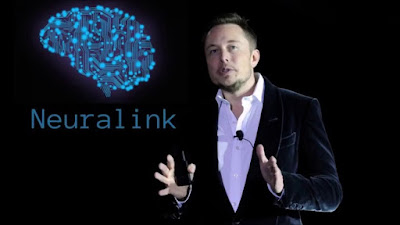Neuralink | Neuralink and the Brain’s Magical Future
According to wikipedia Neuralink is an American neurotechnology company founded by Elon Musk and eight others, reported to be developing implantable brain–computer interfaces (BCIs). The company's headquarters are in San Francisco it was started in 2016 and was first publicly reported in March 2017. The trademark "Neuralink" was purchased from its previous owners in January 2017.
Wait But Why reported in April 2017 that Musk said the company aims to make devices to treat serious brain diseases in the short-term, with the eventual goal of human enhancement. In June 2016, Musk discussed a science fiction concept called "neural lace" that is part of the fictional universe in The Culture, a series of novels by Iain M. Banks.
As of 2018, the company had applied for a license to open an animal testing facility in San Francisco but apparently had not opened one, and instead carried out research at UC Davis.
As of 2018, Neuralink is headquartered in San Francisco's Mission District, sharing an office building with OpenAI, another company co-founded by Musk.
Neuralink’s Challenge
He decides that some specific change in the world will increase the likelihood of humanity having the best possible future. He knows that large-scale world change happens quickest when the whole world—the Human Colossus—is working on it. And he knows that the Human Colossus will work toward a goal if (and only if) there’s an economic forcing function in place—if it’s a good business decision to spend resources innovating toward that goal.
Often, before a booming industry starts booming, it’s like a pile of logs—it has all the ingredients of a fire and it’s ready to go—but there’s no match. There’s some technological shortcoming that’s preventing the industry from taking off.
So when Elon builds a company, its core initial strategy is usually to create the match that will ignite the industry and get the Human Colossus working on the cause. This, in turn, Elon believes, will lead to developments that will change the world in the way that increases the likelihood of humanity having the best possible future. But you have to look at his companies from a zoomed-out perspective to see all of this. If you don’t, you’ll mistake what they do as their business for what they do—when in fact, what they do as their business is usually a mechanism to sustain the company while it innovates to try to make that critical match.
Back when I was working on the Tesla and SpaceX posts, I asked Elon why he went into engineering and not science, and he explained that when it comes to progress, “engineering is the limiting factor.” In other words, the progress of science, business, and industry are all at the whim of the progress of engineering. If you look at history, this makes sense—behind each of the greatest revolutions in human progress is an engineering breakthrough. A match.
And when I started trying to figure out what Neuralink was all about, I knew those were the variables I needed to fill in. At the time, I had only had the chance to get a very vague idea of one of the variables—that the goal of the company was “to accelerate the advent of a whole-brain interface.” Or what I’ve come to think of as a wizard hat.
As I understood it, a whole-brain interface was what a brain-machine interface would be in an ideal world—a super-advanced concept where essentially all the neurons in your brain are able to communicate seamlessly with the outside world. It was a concept loosely based on the science fiction idea of a “neural lace,” described in Iain Banks’ Culture series—a massless, volumeless, whole-brain interface that can be teleported into the brain.
EEG
Dating back almost a century, EEG (electroencephalography) puts an array of electrodes on your head. You know, this whole thing: -
EEG is definitely technology that will look hilariously primitive to a 2050 person, but for now, it’s one of the only tools that can be used with BMIs that’s totally non-invasive. EEGs record electrical activity in different regions of the brain, displaying the findings like this:
EEG graphs can uncover information about medical issues like epilepsy, track sleep patterns, or be used to determine something like the status of a dose of anesthesia.
And unlike fMRI, EEG has pretty good temporal resolution, getting electrical signals from the brain right as they happen—though the skull blurs the temporal accuracy considerably (bone is a bad conductor).
The major drawback is spatial resolution. EEG has none. Each electrode only records a broad average—a vector sum of the charges from millions or billions of neurons (and a blurred one because of the skull).



0 Comments
Post a Comment